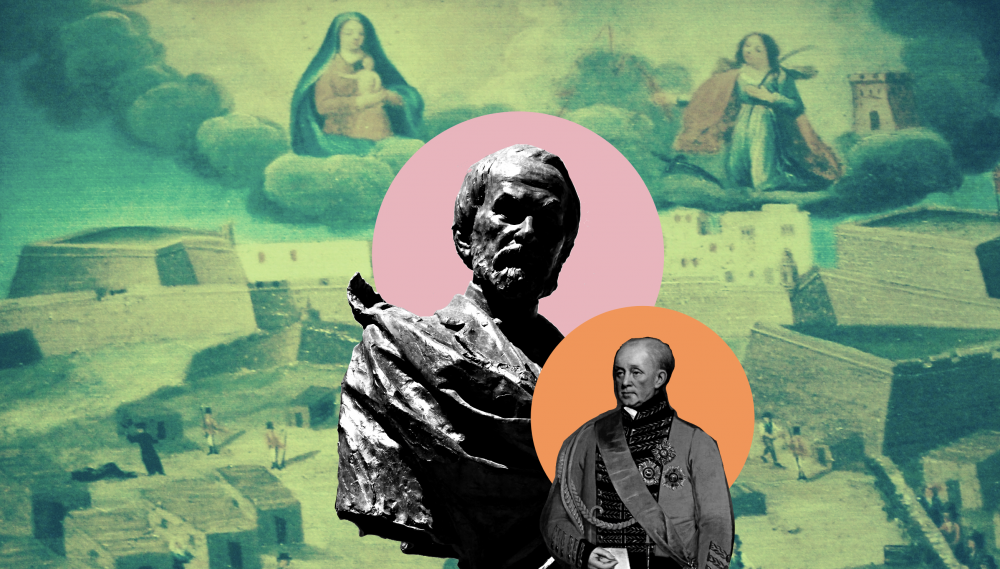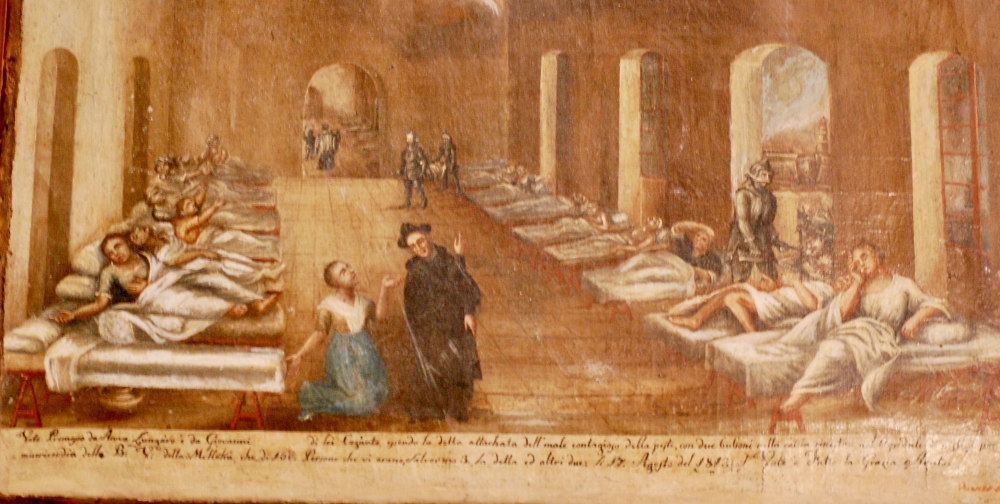How the 1837 cholera paved the way for a Maltese anglophile upper class
Dr David Zammit’s study of 19th century outbreaks of plague and cholera in Malta reveals the effects they had on Maltese civil society and government

WILL the COVID-19 pandemic expose Malta to profound societal changes as more people choose to stay inside and an unprecedented economic impact is visited upon the island?
Certainly enough, Malta has already grappled with various epidemics in the past. But two epidemics which occurred in the first half of the 19th century are particularly instructive, because their political management heralded a change in the way Malta was governed and left a durable influence on Maltese society.
The bubonic plague outbreak of 1813/1814 heralded the start of effective British rule in Malta, its transformation into a de jure colony and the authoritarian military rule of ‘King Tom’ Maitland.
In 1811, just before the plague broke out, Maltese grievances about the perceived arbitrary and exploitative character of the British Occupation had converged in the drafting of a petition demanding an enlightened British reform of the Code de Rohan (the Knight’s period law-code which permitted torture), the introduction of trial by jury, freedom of the press and other rights and liberties enjoyed by British subjects.
It was in this tense period that British rule over Malta was being consolidated, with Malta’s legal status changing from that of a British possession administered by a Civil Commissioner, to a Crown Colony ruled by a Governor.
But fighting the plague was the first task undertaken by the first real British Governor of Malta, General Thomas Maitland.
And he did so by aggressive authoritarian military means in a context of administrative, legal and social chaos.
The Maltese police force originated as one of Maitland’s tools to fight this bubonic plague epidemic, some 15 years before the London Metropolitan Police Force was established.
The plague police was part of a series of disciplinary techniques, including fencing off entire villages and shooting to kill plague victims who tried to conceal their infection, by which British disciplinary bio-power was extended in a capillary form throughout Maltese territory. These techniques had certain common features, particularly: an authoritarian, military character not subject to judicial review of any form whatsoever; they pitted English soldiers and the Maltese police against the ‘Maltese natives’ in the enclosed villages, who could be shot at sight if they broke quarantine; and they resulted in an effective apartheid between the British and the Maltese, such that only one or two British soldiers died when compared to some 5,000 ‘native Maltese’.

After the plague, a long silence fell on Maltese political agitation. A reform of Maltese substantive legislation was postponed for a generation. Instead Sir Thomas felt empowered to pursue a vigorous agenda of authoritarian anglicisation of the Maltese state, which involved abolishing the Maltese elected body, the Università, reforming and anglicising the courts and the trial process, and the introduction of top British officials in the civil service and the judiciary.
This left a profound and durable influence on Maltese state and society. In fact, Maitland left behind a state which was highly authoritarian and where the native population had been cowed into submission and trained to occupy subordinate positions. They tended to avoid mixing with British soldiers and officials, who also held themselves apart and considered themselves to be superior to the ‘natives’.
The disciplinary techniques through which Maitland fought the plague also left an impact which is still discernible today in an enduring fissure between legislative and judicial activity on the one hand and a police force which remains a tool controlled by a ‘sovereign prime minister’ on the other.
Reforming the civil service
While Maitland fought the bubonic plague as a military campaign, with himself as the general-in-chief, his successor Sir Henry Bouverie is never mentioned in regard to the cholera epidemic of 1837 which occurred on his watch. Although cholera also killed some 4,000 mainly native Maltese people, the British medical authorities were convinced that it was not contagious and consequently limited their interventions to the bare minimum.
At the same time this outbreak also took place in an important period of transition. The cholera of 1837 was the prelude to the implementation of the reforms of the Austin/ Lewis Commission, which put an end to the segregation between an all-British ruling elite of top civil servants and the native Maltese and paved the way for the development of an Anglophile middle/upper class.

The cholera epidemic actually broke out while the Commissioners were visiting Malta, and Sarah Austin, the wife of the distinguished jurist John Austin, left a vivid account of the course of this epidemic.
This clearly brings out the sense of distance and hostility between leading British officials on the one hand, the native Maltese physicians who insisted that the cholera was contagious, and the bulk of the population, who suspected that the British government might be trying to poison them through the free medicine it provided.
On the other hand Sir John Stoddart, the English Chief Justice, provided a fascinating account of the cautious precautionary measures adopted by the inhabitants of Sliema, who appointed a mixed Anglo-Maltese commission to manage the impact of cholera on their locality, and hired a physician to visit all the households, as well as provided free bread to all the poorer inhabitants.
As a result, Stoddart noted, only two individuals died of the cholera in their locality.
The Sliema case anticipated a significant change in Maltese politics and society.
Shortly after the end of the cholera epidemic, the Austin/ Lewis Commission was to recommend the removal of top English civil servants (among them ironically Sir John Stoddart himself), their replacement by Maltese counterparts and the making of significant legal reforms.
These included the granting of liberty of the press and the reform of Maltese substantive legislation.
Thus the cholera epidemic marked the transition away from Maitland’s model of top-down Anglicising rule towards a model which, by accepting some of the ‘native Maltese demands’ made possible the careers of individuals like Sir Adrian Dingli, who was simultaneously a native Maltese advocate and a top Colonial civil servant.
It is highly appropriate in this context, that Dingli’s name is indelibly linked to the locality of Sliema, which was to house the new anglophone Maltese middle class which emerged from the same reform process which made his career possible.
Something to think about the next time one walks down Dingli street or takes a stroll around Dingli Circus!








.jpg)




.jpg)






.png)
